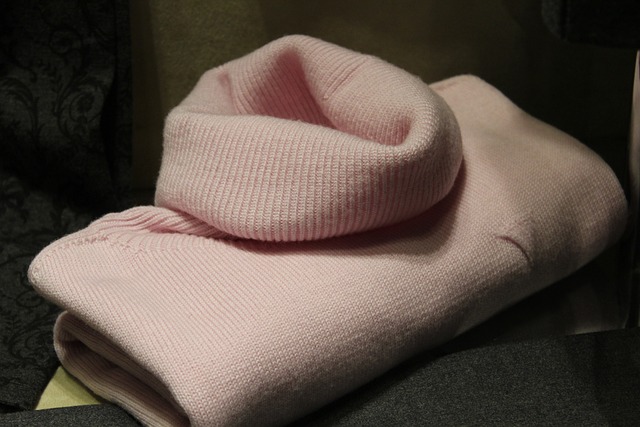Natural vs Synthetic Fibers: Warmth and Comfort Analysis
Understanding the differences between natural and synthetic fibers can transform how you approach cold-weather dressing. Each fiber type offers distinct advantages in warmth retention, breathability, and comfort. Natural fibers like wool, cashmere, and cotton have been trusted for centuries, while modern synthetic materials bring innovative features such as moisture-wicking and durability. This comprehensive analysis explores how these materials perform in winter conditions, helping you make informed decisions about fabric selection for scarves and other cold-weather accessories.

When temperatures drop, the fabric choices you make directly impact your comfort and warmth. Natural fibers derive from plants or animals, including wool, silk, cotton, and cashmere. Synthetic fibers are manufactured through chemical processes, with common examples being polyester, acrylic, and nylon. Both categories offer unique thermal properties, moisture management capabilities, and tactile experiences that influence their suitability for winter wear.
Natural fibers excel in breathability and temperature regulation. Wool, for instance, contains natural crimps that trap air pockets, creating insulation while allowing moisture vapor to escape. Cashmere provides exceptional softness and warmth relative to its weight. Cotton offers comfort but lacks the insulating properties needed for extreme cold. Silk, though lightweight, provides surprising warmth and a luxurious feel against skin. These materials tend to be hypoallergenic and biodegradable, appealing to environmentally conscious consumers.
Synthetic fibers bring technological advantages to cold-weather accessories. Acrylic mimics wool’s warmth at a lower price point and resists moths and mildew. Polyester dries quickly and maintains shape well, making it practical for active lifestyles. Fleece, a polyester derivative, provides excellent warmth-to-weight ratios. Many synthetic blends incorporate moisture-wicking properties that pull perspiration away from skin, preventing the clammy feeling that can occur with some natural fibers. These materials typically require less specialized care and resist wrinkling.
How to Choose Winter Scarves Based on Fabric and Warmth
Selecting the right fabric depends on your specific needs and climate conditions. For extreme cold, wool scarves provide unmatched insulation, with merino wool offering softness without itchiness. Cashmere delivers luxury and warmth for moderate cold but requires careful maintenance. Acrylic scarves work well for budget-conscious shoppers or those with wool sensitivities. Blended fabrics combine benefits—wool-synthetic blends often provide warmth with improved durability and easier care. Consider your activity level: static outdoor activities demand maximum insulation, while active pursuits benefit from moisture-wicking synthetics that prevent overheating.
Guide to Different Ways of Styling Winter Scarves
Scarves offer versatility beyond warmth. The classic loop involves wrapping the scarf around your neck twice for maximum coverage and insulation. The Parisian knot creates a polished look by folding the scarf in half, placing it around your neck, and pulling the ends through the loop. For bulky fabrics, the simple drape works best—letting the scarf hang loosely adds elegance without overwhelming your silhouette. The reverse drape tuck involves wrapping the scarf around your neck with one end longer, then tucking both ends into your coat for a streamlined appearance. Experiment with asymmetrical styles by leaving one end significantly longer than the other for contemporary flair.
Different Materials Used in Winter Scarves and Their Benefits
Each material brings distinct characteristics to winter accessories. Merino wool regulates temperature exceptionally well, keeping you warm without overheating, and naturally resists odors. Cashmere, derived from goat undercoats, provides three times the insulation of sheep’s wool while remaining incredibly soft. Alpaca fiber offers hypoallergenic warmth that surpasses wool, with a silky texture that doesn’t pill easily. Mohair creates lightweight yet warm scarves with distinctive luster. Among synthetics, microfiber polyester delivers softness approaching natural fibers while maintaining easy-care properties. Fleece provides maximum warmth with minimal weight, ideal for outdoor activities. Acrylic blends offer wool-like warmth with vibrant color retention and affordability.
Tips for Pairing Winter Scarves with Coats and Sweaters
Successful pairing balances texture, color, and proportion. With structured coats, opt for softer, drapier scarves that contrast the rigid lines—silk or lightweight cashmere work beautifully. Bulky sweaters pair best with thinner scarves to avoid excessive volume around the neck. When wearing neutral outerwear, introduce pattern or color through your scarf as a focal point. Conversely, patterned coats benefit from solid-colored scarves. Consider length: longer scarves suit taller frames and longer coats, while shorter scarves complement petite builds and cropped jackets. Texture mixing adds visual interest—pair smooth wool coats with chunky knit scarves or sleek leather jackets with soft cashmere.
Seasonal Trends in Women’s Winter Scarves
Winter scarf trends evolve with fashion cycles while maintaining practical foundations. Oversized blanket scarves remain popular, offering versatility as wraps or shawls beyond traditional neck wear. Plaid patterns continue their cyclical resurgence, particularly in traditional tartans and modern color combinations. Fringe details add movement and bohemian flair to solid-colored options. Neutral palettes dominate—camel, gray, cream, and black provide timeless versatility. However, jewel tones like emerald, sapphire, and burgundy inject richness into winter wardrobes. Sustainable materials gain prominence as consumers prioritize eco-friendly choices, driving demand for organic cotton, recycled polyester, and ethically sourced wool. Chunky cable knits offer textural interest and nostalgic appeal, while sleek infinity scarves provide modern minimalism.
The choice between natural and synthetic fibers ultimately depends on personal priorities—whether you value traditional materials with natural properties or modern innovations offering practical benefits. Many find that owning both types allows flexibility for different occasions, weather conditions, and style preferences. Quality matters regardless of fiber type, as well-constructed scarves from either category will provide years of warmth and style. Consider building a versatile collection that addresses various needs, from everyday commuting to special occasions, ensuring you’re prepared for whatever winter brings.




